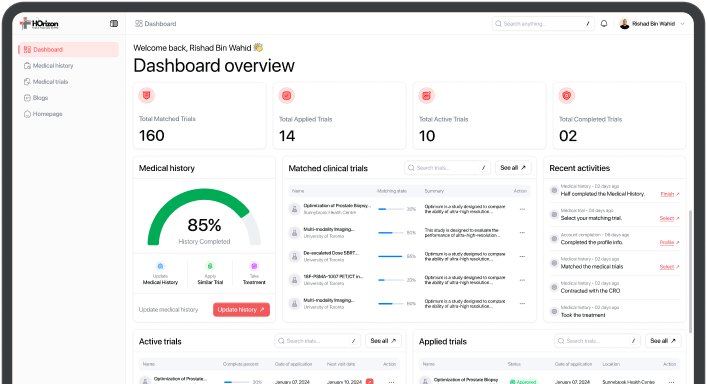Molecular Imaging Informed Radiation Dose Escalation to Sites of Recurrent Disease and De-escalation to Uninvolved Areas in Salvage Radiotherapy for Prostate Cancer (MIDAS-Prostate)
Contact information
Srinivas Raman, MD
Princess Margaret Cancer Center
Toronto, Ontario, Canada, M5G 2M9
Basic information
N/A
N/A Age
60 Enrollment
Trial Details
Brief Summary
This is a Phase II prospective sing-arm trial that is recruiting 60 participants from patients that have biochemical failure after radical prostatectomy with local or regional recurrence proven by PSMA PET. Participants of this study will receive molecular imaging informed radiation dose escalation to site of recurrent disease and de-escalation to uninvolved areas. Participants will be follow-up as per standard of care up to 5 years post-treatment.
Official Title
Molecular Imaging Informed Radiation Dose Escalation to Sites of Recurrent Disease and De-escalation to Uninvolved Areas in Salvage Radiotherapy for Prostate Cancer
Selection Criteria
Eligibility Inclusion Criteria
-
- Men older than 18 years old.
- Histologically proven initial diagnosis of adenocarcinoma prostate cancer.
- Previous radical prostatectomy.
- Biochemical relapse with local or regional recurrence proven on PSMA PET.
- Five or less positive nodes on the PSMA PET.
- ECOG 0-1
Eligibility Exclusion Criteria
-
- Presence of para-aortic lymph nodes or distant metastasis.
- Chronic pelvic inflammatory disease.
- Contraindication for radiation treatment.
- Previous radiation treatment within the pelvis
